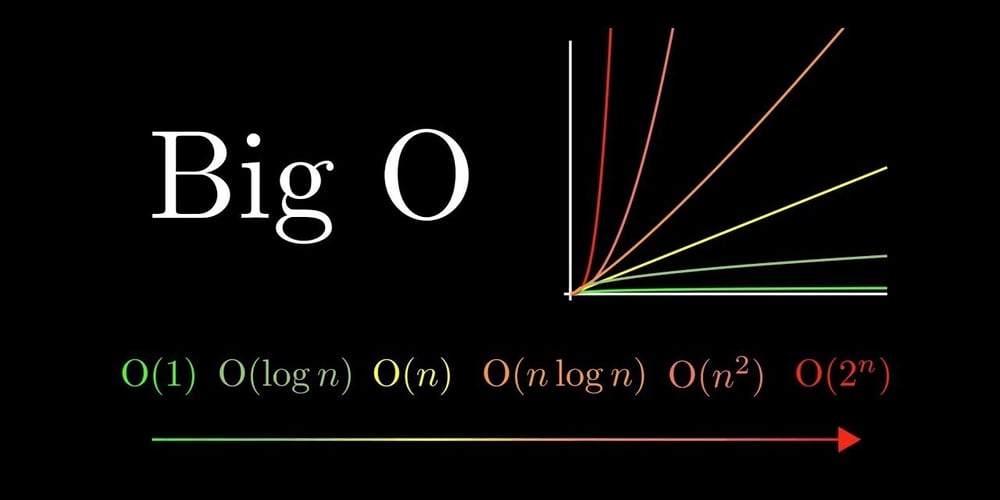# Problem Statement:
# Given a set of cities and the distances between them, find the shortest possible route that visits each city
# exactly once and returns to the origin city.
import random
def calc_total_distance(route, distance_matrix):
total_distance = 0
for i in range(len(route) - 1):
total_distance += distance_matrix[route[i]][route[i + 1]]
total_distance += distance_matrix[route[-1]][route[0]] # Return to start
return total_distance
def two_opt(route, distance_matrix):
best_route = route[:]
best_distance = calc_total_distance(route, distance_matrix)
for i in range(1, len(route) - 1):
for j in range(i + 1, len(route)):
new_route = route[:i] + route[i:j+1][::-1] + route[j+1:]
new_distance = calc_total_distance(new_route, distance_matrix)
if new_distance < best_distance:
best_route = new_route
best_distance = new_distance
return best_route, best_distance
# Test TSP
distance_matrix = [[0, 1, 2, 3], [1, 0, 4, 5], [2, 4, 0, 6], [3, 5, 6, 0]]
route = [0, 1, 2, 3]
best_route, best_distance = two_opt(route, distance_matrix)
print("Best Route:", best_route)
print("Best Distance:", best_distance)
# Problem Statement:
# Given a set of cities and the distances between them, find the shortest possible route that visits each city
# exactly once and returns to the origin city.
import random
def calc_total_distance(route, distance_matrix):
total_distance = 0
for i in range(len(route) - 1):
total_distance += distance_matrix[route[i]][route[i + 1]]
total_distance += distance_matrix[route[-1]][route[0]] # Return to start
return total_distance
def two_opt(route, distance_matrix):
best_route = route[:]
best_distance = calc_total_distance(route, distance_matrix)
for i in range(1, len(route) - 1):
for j in range(i + 1, len(route)):
new_route = route[:i] + route[i:j+1][::-1] + route[j+1:]
new_distance = calc_total_distance(new_route, distance_matrix)
if new_distance < best_distance:
best_route = new_route
best_distance = new_distance
return best_route, best_distance
# Test TSP
distance_matrix = [[0, 1, 2, 3], [1, 0, 4, 5], [2, 4, 0, 6], [3, 5, 6, 0]]
route = [0, 1, 2, 3]
best_route, best_distance = two_opt(route, distance_matrix)
print("Best Route:", best_route)
print("Best Distance:", best_distance)
# Problem Statement:
# Given a set of jobs, each with a processing time, you need to schedule them on a set of machines to minimize
# the total completion time.
def schedule_jobs(jobs, num_machines):
jobs.sort(reverse=True) # Sort jobs by descending order of time
machines = [0] * num_machines # Machines start with 0 time
for job in jobs:
# Assign the job to the machine with the minimum current load
machine_id = machines.index(min(machines))
machines[machine_id] += job
return machines
# Test Job Scheduling
jobs = [10, 15, 20, 25, 30]
num_machines = 3
machines = schedule_jobs(jobs, num_machines)
print("Job Distribution across Machines:", machines)
# Problem Statement:
# Place `N` queens on an `N x N` chessboard such that no two queens threaten each other (i.e., no two queens
# are in the same row, column, or diagonal).
def is_safe(board, row, col):
for i in range(row):
if board[i] == col or board[i] - i == col - row or board[i] + i == col + row:
return False
return True
def solve_n_queens(board, row, n):
if row == n:
return [board[:]]
solutions = []
for col in range(n):
if is_safe(board, row, col):
board[row] = col
solutions += solve_n_queens(board, row + 1, n)
board[row] = -1 # Backtrack
return solutions
# Test N-Queens
n = 4
board = [-1] * n # -1 means no queen placed
solutions = solve_n_queens(board, 0, n)
print("Solutions:", solutions)
# Problem Statement:
# You are given an amount and a set of coin denominations. Find the fewest number of coins that make up that amount.
def coin_change(coins, amount):
coins.sort(reverse=True)
result = []
for coin in coins:
while amount >= coin:
amount -= coin
result.append(coin)
return result if amount == 0 else "Not possible"
# Test Coin Change
coins = [1, 5, 10, 25, 50]
amount = 63
coins_used = coin_change(coins, amount)
print("Coins Used:", coins_used)
# Problem Statement:
# Given a set of integers, find a subset whose sum is equal to a target value.
def subset_sum(nums, target):
nums.sort(reverse=True)
current_sum = 0
subset = []
for num in nums:
if current_sum + num <= target:
subset.append(num)
current_sum += num
return subset if current_sum == target else "No solution"
# Test Subset Sum
nums = [1, 2, 3, 4, 5, 6]
target = 10
subset = subset_sum(nums, target)
print("Subset:", subset)
# Problem Statement:
# You are given an optimization problem where the search space is too large to check all possible solutions.
# How can you find a good solution in a reasonable amount of time?
import random
import math
def simulated_annealing(initial_state, evaluate, neighbor, temperature=1000, cooling_rate=0.995, min_temp=0.1):
current_state = initial_state
current_value = evaluate(current_state)
while temperature > min_temp:
next_state = neighbor(current_state)
next_value = evaluate(next_state)
if next_value < current_value or random.random() < math.exp((current_value - next_value) / temperature):
current_state = next_state
current_value = next_value
temperature *= cooling_rate
return current_state, current_value
# Example Test Problem
def evaluate(state):
return sum(state) # Just a simple example, can be replaced
def neighbor(state):
next_state = state[:]
next_state[random.randint(0, len(state)-1)] = random.randint(1, 10) # Modify randomly
return next_state
# Test Simulated Annealing
initial_state = [random.randint(1, 10) for _ in range(5)]
best_state, best_value = simulated_annealing(initial_state, evaluate, neighbor)
print("Best State:", best_state)
print("Best Value:", best_value)
# Problem Statement:
# Given a graph with vertices and edges, assign colors to each vertex such that no two adjacent vertices have
# the same color, using the smallest number of colors possible.
def is_valid_coloring(graph, coloring):
for node in graph:
for neighbor in graph[node]:
if coloring[node] == coloring[neighbor]:
return False
return True
def graph_coloring(graph, num_colors):
coloring = {node: -1 for node in graph} # -1 means no color assigned
nodes = list(graph.keys())
def assign_colors(node_idx):
if node_idx == len(nodes):
return True
node = nodes[node_idx]
for color in range(num_colors):
coloring[node] = color
if is_valid_coloring(graph, coloring) and assign_colors(node_idx + 1):
return True
coloring[node] = -1 # Backtrack
return False
assign_colors(0)
return coloring
# Test Graph Coloring
graph = {0: [1, 2], 1: [0, 2], 2: [0, 1]}
colors = graph_coloring(graph, 2)
print("Graph Coloring:", colors)
# Problem Statement:
# Given a graph and a subset of vertices, find the minimum weight tree that connects the subset of vertices.
# A simple greedy solution to Steiner Tree isn't feasible.
# A complex algorithm is needed like Minimum Spanning Tree with Steiner points.
# But for the sake of simplicity, here's a sample greedy approach:
def steiner_tree(graph, terminals):
# Simple greedy approach (not optimal)
# Start with a terminal node and greedily add the nearest neighbors
tree = set(terminals)
while len(tree) < len(graph):
best_edge = None
best_distance = float('inf')
for node in tree:
for neighbor in graph[node]:
if neighbor not in tree and graph[node][neighbor] < best_distance:
best_edge = (node, neighbor)
best_distance = graph[node][neighbor]
tree.add(best_edge[1])
return tree
# Test Steiner Tree
graph = {0: {1: 1, 2: 2}, 1: {0: 1, 2: 1}, 2: {0: 2, 1: 1}}
terminals = [0, 2]
tree = steiner_tree(graph, terminals)
print("Steiner Tree:", tree)
# Problem Statement:
# Given a graph, partition the vertices into two sets such that the number of edges between the sets is maximized.
import random
def max_cut(graph):
cut = random.choice([0, 1])
partitions = {node: cut for node in graph}
# Simple greedy approach (not optimal)
for node in graph:
if any(partitions[neighbor] != partitions[node] for neighbor in graph[node]):
partitions[node] = 1 - partitions[node] # Flip to opposite partition
cut_value = sum(1 for node in graph for neighbor in graph[node] if partitions[node] != partitions[neighbor])
return cut_value, partitions
# Test Max Cut
graph = {0: [1, 2], 1: [0, 2], 2: [0, 1]}
cut_value, partitions = max_cut(graph)
print("Max Cut Value:", cut_value)
print("Partitions:", partitions)
# Problem Statement:
# Given a partially filled Sudoku grid, fill in the missing numbers such that each row, column, and 3x3 subgrid
# contains every number from 1 to 9.
def is_safe(board, row, col, num):
for i in range(9):
if board[row][i] == num or board[i][col] == num:
return False
start_row, start_col = row - row % 3, col - col % 3
for i in range(3):
for j in range(3):
if board[i + start_row][j + start_col] == num:
return False
return True
def solve_sudoku(board):
for row in range(9):
for col in range(9):
if board[row][col] == 0:
for num in range(1, 10):
if is_safe(board, row, col, num):
board[row][col] = num
if solve_sudoku(board):
return True
board[row][col] = 0
return False
return True
# Test Sudoku Solver
board = [
[5, 3, 0, 0, 7, 0, 0, 0, 0],
[6, 0, 0, 1, 9, 5, 0, 0, 0],
[0, 9, 8, 0, 0, 0, 0, 6, 0],
[8, 0, 0, 0, 6, 0, 0, 0, 3],
[4, 0, 0, 8, 0, 3, 0, 0, 1],
[7, 0, 0, 0, 2, 0, 0, 0, 6],
[0, 6, 0, 0, 0, 0, 2, 8, 0],
[0, 0, 0, 4, 1, 9, 0, 0, 5],
[0, 0, 0, 0, 8, 0, 0, 7, 9]
]
solve_sudoku(board)
print("Solved Sudoku:")
for row in board:
print(row)
# Problem Statement:
# Given an array of integers, find the contiguous subarray with the maximum sum.
def max_subarray(nums):
max_sum = current_sum = nums[0]
for num in nums[1:]:
current_sum = max(num, current_sum + num)
max_sum = max(max_sum, current_sum)
return max_sum
# Test Maximum Subarray
nums = [-2, 1, -3, 4, -1, 2, 1, -5, 4]
max_sum = max_subarray(nums)
print("Maximum Subarray Sum:", max_sum)









































































































































































![[The AI Show Episode 143]: ChatGPT Revenue Surge, New AGI Timelines, Amazon’s AI Agent, Claude for Education, Model Context Protocol & LLMs Pass the Turing Test](https://www.marketingaiinstitute.com/hubfs/ep%20143%20cover.png)



































































































































![From drop-out to software architect with Jason Lengstorf [Podcast #167]](https://cdn.hashnode.com/res/hashnode/image/upload/v1743796461357/f3d19cd7-e6f5-4d7c-8bfc-eb974bc8da68.png?#)









































































































.jpg?#)































_ArtemisDiana_Alamy.jpg?#)


 (1).webp?#)









































































-xl.jpg)












![Yes, the Gemini icon is now bigger and brighter on Android [U]](https://i0.wp.com/9to5google.com/wp-content/uploads/sites/4/2025/02/Gemini-on-Galaxy-S25.jpg?resize=1200%2C628&quality=82&strip=all&ssl=1)










![Apple Rushes Five Planes of iPhones to US Ahead of New Tariffs [Report]](https://www.iclarified.com/images/news/96967/96967/96967-640.jpg)
![Apple Vision Pro 2 Allegedly in Production Ahead of 2025 Launch [Rumor]](https://www.iclarified.com/images/news/96965/96965/96965-640.jpg)


































































































































